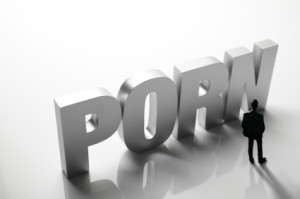This is Your Brain on Porn
I found myself unable to stop looking at porn for long periods of time. My lust became harder to satisfy, and I looked for something different, frequently searching for porn featuring same-sex actors, nonconsensual sex or occasionally even pedophilia. At its worst, I would look at porn every day. (quoted from Closing the Window, by Tim Chester)
A 1997 study of compulsive sexual behavior (CSB) suggested that the extent of CSB was both under-recognized and underappreciated. Previous estimates cited in that study indicated that 5 or 6% of adults were affected by CSB. That, however, is likely an underestimate at this time, given the easy access to porn on the web, and its resultant anonymity. The sexual behaviors engaged by the study’s subjects did not even mention online porn, which was just beginning to emerge as a problem.
This early study’s research data were responses to “The Compulsive Sexual Disorders Interview.” Fifty-four percent of the 36 individuals reported a history of childhood physical or sexual abuse. Seventy-five percent reported that their sexual behavior sometimes occurred when under the influence of alcohol or drugs. The researchers suggested that the lack of a universally accepted definition of CSB was a major stumbling block to future work. They also said more work needed to be done to establish the frequency of CSB and clarify if it was indeed an addiction.
A 2006 article reviewed CSB (called impulsive-compulsive sexual behavior, ICSB) and assessed the merit of classifying it as an addiction. It concluded that there was still only limited evidence to classify ICSB along with the chemical addictions. “It is hoped, that as more research is done on this disorder, it will become clearer if this disorder should be classified in that manner or in some other manner.” Recent studies with neuroimaging technology seem to be providing evidence that CSB is a form of addiction.
A July 2014 article published in the PLOS One journal noted that while the DSM-5 classified pathological gambling as a behavioral addiction, video-gaming, internet use and sex (Hypersexual Disorder) were not included in the main part of the DSM. CSB was described in a University of Cambridge report on this research as an obsession with sexual thoughts, feelings or behavior that they are unable to control; which negatively influence personal or work life. CSB sufferers also have high levels of distress from feelings of shame. The study compared 19 heterosexual males with CSB to 19 age-matched heterosexual males without CSB. All CSB subjects met the proposed criteria for Hypersexual Disorder.
The participants were shown a series of short videos featuring either sexually explicit content or sports while their brain activity was monitored by functional magnetic resonance imaging (fMRI). The research found that three regions in the brain were more active in the brains of individuals with CSB than the control group. “Significantly, these regions – the ventral striatum, dorsal anterior cingulate and amygdala – were regions that are also particularly activated in drug addicts when shown drug stimuli.”
The researchers also asked participants to rate the level of sexual desire they felt while watching the videos. “As anticipated, patients with compulsive sexual behaviour showed higher levels of desire towards the sexually explicit videos.” A correlation was also found between brain activity and age. The younger the person was, the greater the level of activity in the ventral striatum in response to pornography. This association was strongest in subjects with CSB.
The study’s lead author said that while there are clear differences in brain activity that mirror those with drug addicts, these differences cannot be used to diagnose CSB; nor can they suggest that porn is inherently addictive. Dr John Williams, Head of Neuroscience and Mental Health at the Wellcome Trust, said:
This study takes us a step further to finding out why we carry on repeating behaviours that we know are potentially damaging to us. Whether we are tackling sex addiction, substance abuse or eating disorders, knowing how best, and when, to intervene in order to break the cycle is an important goal of this research.
A study published in the July 2014 edition of JAMA Psychiatry found a significant negative association between the hours of porn viewed per week and the grey matter volume in the parts of the brain related to porn consumption. The researchers speculated that this loss of brain function “could reflect change in neuroplasticity as a consequence of an intense stimulation of the reward system [one of the areas of the brain associated with addiction].” It also could be a precondition that makes porn consumption more attractive. The authors said:
Since pornography appeared on the Internet, the accessibility, affordability, and anonymity of consuming visual sexual stimuli have increased and attracted millions of users. . . . Based on the assumption that pornography consumption bears resemblance with reward-seeking behavior, novelty-seeking behavior, and addictive behavior, we hypothesized alterations of the frontostriatal network in frequent users.
Frontostriatal circuits are neural pathways that connect frontal lobe regions of the brain with the basal ganglia (striatum). They mediate motor, cognitive, and behavioral functions within the brain.
You can read popular reflections on the above-discussed brain scan studies here, here and here.
Do you think there is enough evidence to say that porn is truly addictive?


